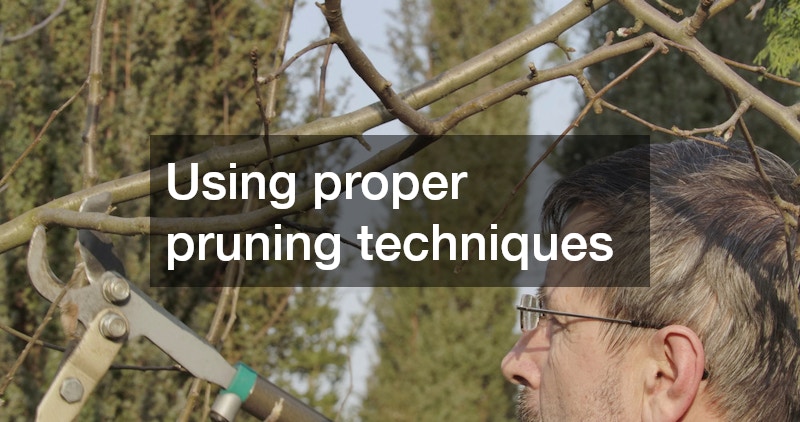Storm season can bring a wave of anxiety for homeowners, especially when it comes to protecting their properties from severe weather. Whether it’s high winds, heavy rain, or ice storms, the risks of storm damage loom high, particularly from the trees that surround our homes. These natural giants, while beautiful and vital to our ecosystems, can become hazardous in extreme conditions. Explore how to identify potential hazards, prepare your yard effectively, and the importance of tree removal and maintenance in safeguarding against storm damage.
Identifying Potential Hazards
Before severe weather sets in, it’s essential to assess your yard for potential hazards that may threaten your home and safety. Trees with visible signs of decay, damage, or instability should be prioritized in your assessment.
For instance, look for cracks in the trunk, dead branches, or leaves that are not budding, which could indicate a serious problem. Weak root systems, often caused by soil erosion or disease, can make a tree more susceptible to falling over. By identifying these potential hazards early, homeowners can take appropriate measures to mitigate risks associated with storm damage.
Consider the proximity of trees to your home, power lines, and other structures. Trees that are too close to these elements are especially concerning, as they can cause significant damage if they fall during a storm. A general rule of thumb is to maintain at least a distance equal to the height of the tree between it and any structures. Evaluating the lean of trees can also provide insight into their stability; a tree that leans excessively may be a sign of an impending failure. Ultimately, knowing how to conduct a thorough inspection can empower you to make informed decisions about which trees may need attention.
Consulting with a professional arborist can provide additional expertise in identifying hazards that may not be immediately apparent. These specialists can offer advice on tree health and structural integrity and recommend treatments for at-risk trees, from trimming to tree removal. They can also assist in evaluating other elements in your yard that may pose a threat in strong winds, such as large fences or heavy garden features. By taking these proactive steps, you can significantly reduce the likelihood of storm damage and enhance the safety of your environment.
Preparing Your Yard for Severe Weather
Preparation is the first line of defense against storm damage, and there are several strategies homeowners can employ to safeguard their properties. One effective measure is to clear your yard of loose items that could become projectiles in high winds. This includes furniture, decorations, and even potted plants, all of which can cause damage if tossed by strong gusts. Organizing your yard and maintaining a tidy space becomes increasingly important as storm season approaches. By minimizing clutter, you can help ensure that flying debris doesn’t add to your risk during severe weather.
Evaluating and maintaining the health of your trees is vital for storm preparedness. Regular tree maintenance, such as trimming dead or weak branches, not only enhances the tree’s health but also reduces the risk of those branches breaking off and causing damage. Using proper pruning techniques can encourage a stronger growth structure that resists wind. If a tree is determined to be a hazard, transitioning to a removal plan may be the most prudent option. Scheduled maintenance can significantly mitigate risks associated with storms.
Consider using design modifications in your landscaping for added protection against severe weather. Planting trees strategically or using windbreaks can protect your home by redirecting gusty winds. Additionally, installing gutter systems or rainwater management systems can prevent flooding and erosion around your property. Utilizing berms or swales can help channel water away from your home, thus reducing the impact of heavy rainfall.
Tree Removal and Maintenance
Tree removal is often a challenging yet necessary decision for homeowners faced with hazardous trees. If a tree poses a consistent threat due to damage or instability, removal may be the safest choice. While it might be tempting to postpone this decision, living with a compromised tree can lead to catastrophic accidents during strong storms. A professional tree removal service can ensure that the job is carried out safely and effectively, minimizing further risks during the process. Additionally, understanding the signs that a tree needs to be removed is essential for long-term protection against storm damage.
Routine tree maintenance is just as important as knowing when to remove them. Regular inspections by arborists can identify issues before they escalate into larger problems. Treatments for diseases, pests, and structural weaknesses can enhance a tree’s durability against severe weather. Proper watering, mulching, and fertilization also play a significant role in maintaining tree health. By committing to tree maintenance, homeowners can help ensure their trees remain healthy and less likely to cause damage during storms.
Tree removal and maintenance are essential components of a comprehensive storm preparedness plan. Removing hazardous trees or branches not only protects your home and property but also contributes to the overall safety of your neighborhood. Homeowners should view tree care as an integral part of property management, ensuring that their yard is a safe haven rather than a potential risk.
Preparing your yard for severe weather is not just about protecting your property; it’s about ensuring the safety of your family and neighbors. Identifying potential hazards in your yard, effectively preparing for storms, and maintaining or removing trees can drastically reduce the risks associated with storm damage. By being proactive, homeowners can take control of their outdoor spaces and create a safer environment during storm season.

